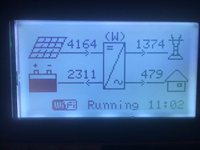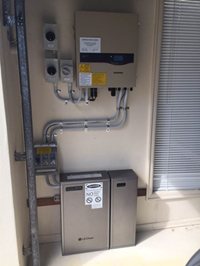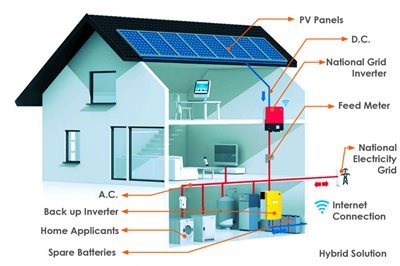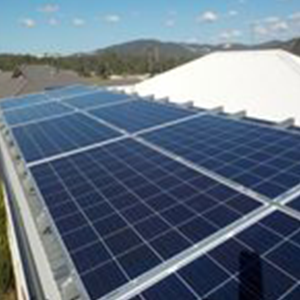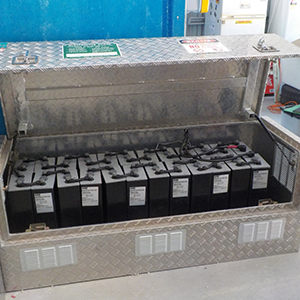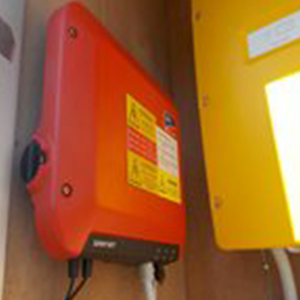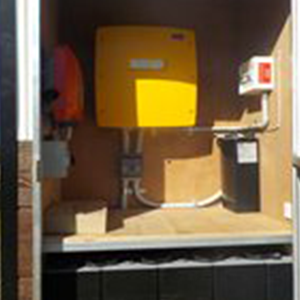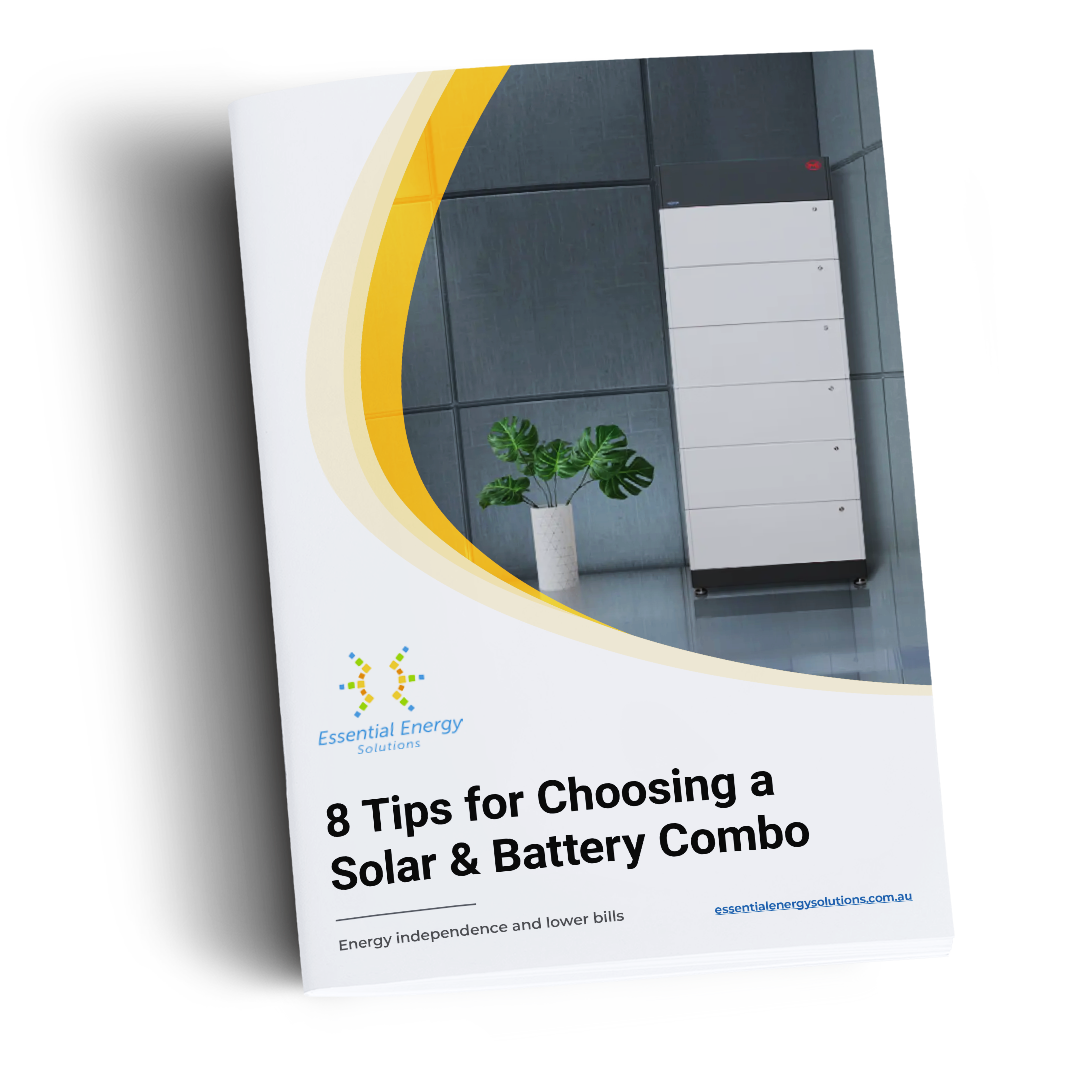With Battery backup the excess power can be used to charge your batteries. This gives you the opportunity to use the stored power in your batteries that has been generated during the day in the evenings or peak times, this means a cheaper electricity bill and you may find yourself not paying for any electricity.
Hybrid vs Couple Solar Battery Systems
Coupled solar batteries plug into an external inverter which then connects to the Solar Panels on your roof.
On the other hand, Hybrid Solar Batteries have a solar inverter build into the battery system and do not require an external inverter as a step between the battery and the solar panels on your roof.
Off-Grid Solar Battery Systems
Not all solar batteries are able to supply stored energy unless they are connected to the power infrastructure through your energy retailer.
If you need to go totally off-grid, then you will need an off-grid solar battery system.
You will need us to work out with your help which appliances you want to connect to your off-grid solar system, because each appliance has different power requirements (i.e. consider their consumption and current (amps) levels).
This will help us to determine the "size" of the solar off-grid system we install for you. We take the energy requirements for each of these "typical appliances" you intend using and calculate the power required to run these.
You can speak to us about these requirements when we are on site for the quotation or give us a call to discuss your needs.
All Solar Battery Systems are not created equal
Not all solar batteries are manufactured to the same standards.
The solar system you have as well as the charge and discharge rates of the different solar batteries will impact the speed at which a solar battery will charge as well as the amount of energy you can use to power your home or business.
For example, if your battery has a 2.3 kW discharge rate, and the load in your home is 3.3 kW, you will draw 2.3 kW from the battery and 1.0 kW from your energy retailer.
Likewise, if your solar system is generating 4.6 kW, and the load in the house is 1.0 kW, and the charge rate on your solar battery is only 2.3 kW, then only 2.3kW will feed into your battery. The remaining or excess 1.3 kW will flow back into the grid. Therefore a battery with a higher charge rate will be needed to prevent such a large amount of power going back to your energy retailer. And of course you only receive a few miserable cents for all this excess energy going back to the retailer!!

